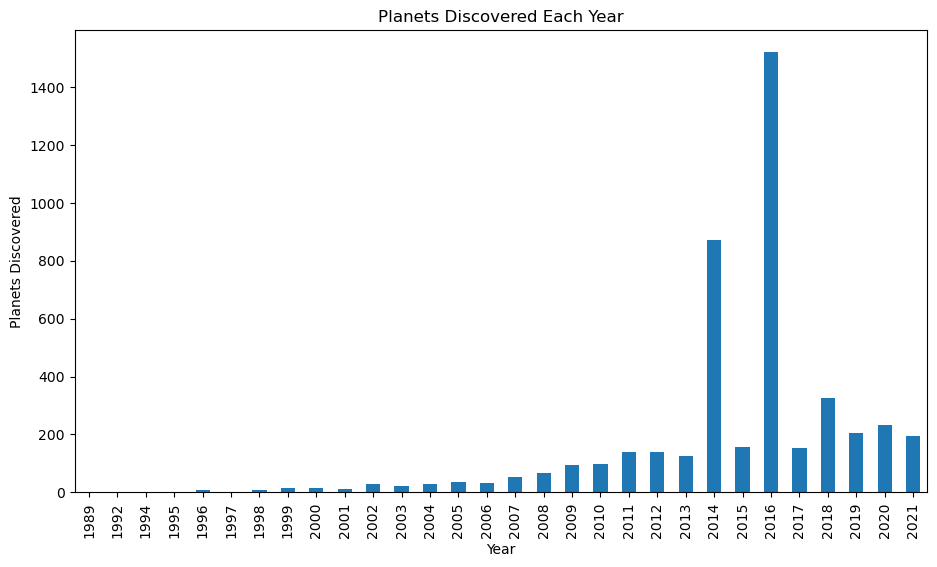Exoplanet Discovery Visualizations
Histogram of Discovery Year
This histogram illustrates the number of exoplanets discovered each year, highlighting trends in discovery rates over time. As technology advances and telescopes improve, we can observe a significant rise in discoveries over the last two decades. From early groundbreaking discoveries to more recent ones, this data offers a glimpse into our accelerating exploration of the universe.
Scatter Plot: Orbital Period vs. Mass
This scatter plot shows the relationship between the orbital period and mass of exoplanets, allowing us to observe patterns in their characteristics. Some planets have massive sizes but shorter orbital periods, while others are smaller yet orbit much further from their stars. By understanding this relationship, scientists can infer the dynamic behavior of these distant worlds and hypothesize their possible compositions.
Scatter Plot: Stellar Mass vs. Mass
This plot compares the stellar mass of host stars with the mass of their orbiting exoplanets, revealing insights into stellar influence on planet formation. Large stars often host massive planets, while smaller stars tend to have lower-mass planets. This relationship helps us better understand how massive stars influence planetary systems and the conditions that foster habitability.
Discovery Method Pie Chart
The pie chart displays the distribution of different discovery methods used to identify exoplanets, illustrating the most common techniques in the field. Methods such as radial velocity and transit photometry dominate, providing most of the confirmed discoveries. These methods have proven to be critical tools in reshaping our understanding of planetary systems beyond our own.
Stellar Mass Scatter Plot
This scatter plot visualizes the relationship between stellar mass and exoplanet mass, helping to identify correlations in their properties. These correlations provide clues about how planets form and evolve around stars of varying sizes. By studying these patterns, scientists can develop new models for how exoplanets may be distributed in the galaxy.
Additional Discovery Image

This image highlights key findings in exoplanet research, showing the vast diversity of worlds we’ve uncovered. Each discovery has revealed something unique about the universe, and as our detection techniques grow more advanced, we uncover new surprises. From hot Jupiters to potentially habitable rocky planets, the universe continues to astonish us with its complexity.